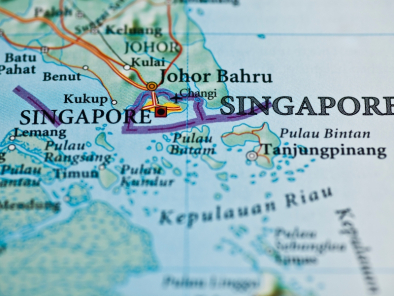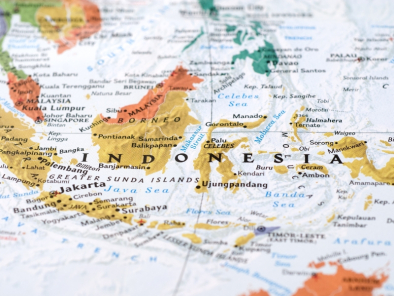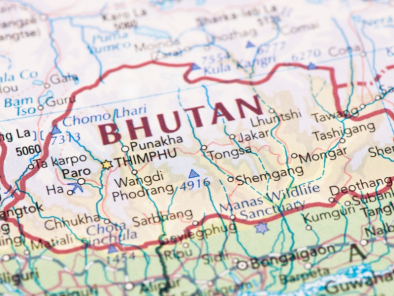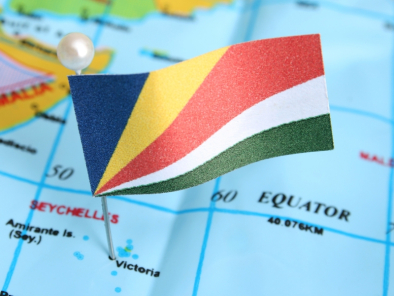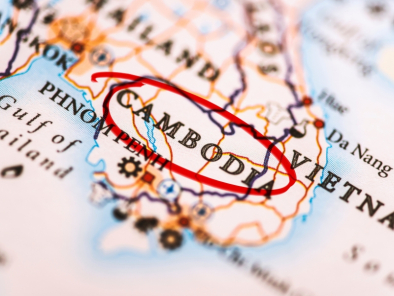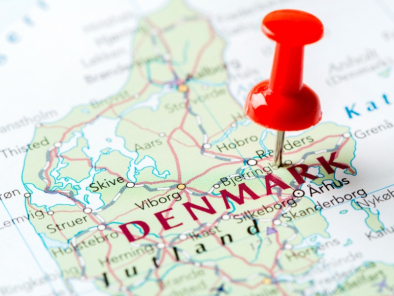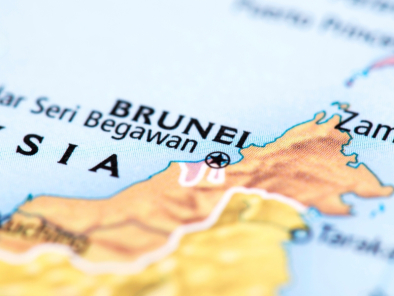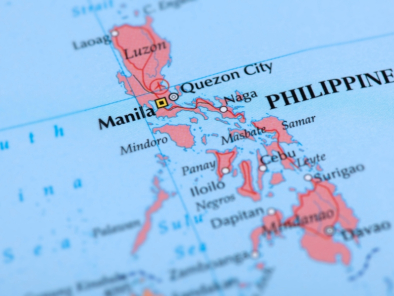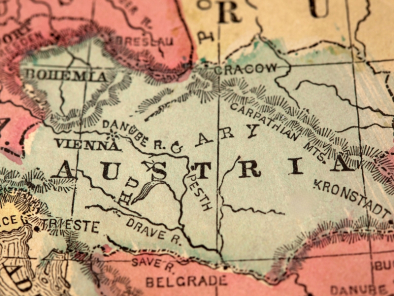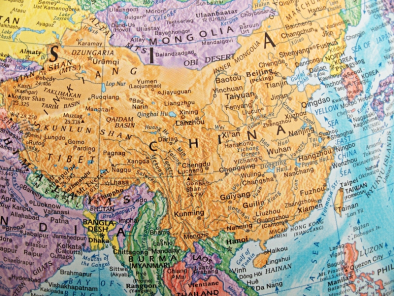SINGAPORE
If there is one word that best captures Singapore, it is “unique”. A
dynamic city rich in contrast and colour, you'll find a harmonious blend of
culture, cuisine, arts and architecture here. Brimming with unbridled energy,
this little dynamo in Southeast Asia embodies
the finest of both East and West. A single day's trail will take you from the
past to the future, from exotic ethnic enclave to efficient business centre,
from serene gardens to sleek skyscrapers.
TIME:
Singapore is 2 hours 30 minutes ahead of India.
VISA The
visa is to be obtained prior to arrival in the country
CLIMATE:
Singapore's tropical climate is heaven-sent as its 85 miles north of
the equator the island is warm and humid all year round, with only slight
variations between the average maximum of 31 degrees Celsius and minimum of 23
degrees Celsius. There is no marked wet or dry season as rain falls throughout
the year. Singapore
receives more rain than usual during the northeast monsoon season from November
to January, although humidity is often high during this period of time. Showers
are usually sudden and heavy, but also brief and refreshing.
|
Monthly
averages
|
|
|
Avg Low in °C
|
Avg Hi in °C
|
Avg Precip
|
|
January
|
24°
|
30°
|
19.74 cm
|
|
February
|
24°
|
31°
|
8.21 cm
|
|
March
|
25°
|
32°
|
12.74 cm
|
|
April
|
25°
|
32°
|
12.65 cm
|
|
May
|
26°
|
32°
|
13.73 cm
|
|
June
|
26°
|
32°
|
10.19 cm
|
|
July
|
25°
|
31°
|
13.04 cm
|
|
August
|
25°
|
31°
|
11.34 cm
|
|
September
|
25°
|
31°
|
12.67 cm
|
|
October
|
25°
|
31°
|
12.24 cm
|
|
November
|
24°
|
31°
|
20.81 cm
|
|
December
|
24°
|
30°
|
22.55 cm
|
CURRENCY:
Singapore's official currency is the Singapore Dollar (SGD), which
is divided into 100 cents. The US and Australian Dollars, Yen and British Pound
are also accepted in the larger shopping centres. Major credit cards are
accepted in hotels, shops and restaurants. ATMs are widely distributed and
banks advance cash against the major credit cards. Traveller’s cheques can be
cashed at banks or licensed moneychangers and at selected hotels. Banks are
open daily, but some do not do foreign exchange on Saturdays.
Tipping is not encouraged as most hotels and restaurants in Singapore
already levy a 10% service charge on customers' bills. Tipping is not a way of
life in Singapore,
but is appreciated for excellent service.
HOW TO GET THERE:
By Air: Singapore
Airlines (SQ), Air India (AI), Indian Airways (IC), Jet Airways (9W), Silk Air
(MI) fly directly into Singapore.
Most
International Carriers like Malaysian Airlines, Sri Lankan, Emirates, Air France, Thai Airways, etc fly into Singapore.
WHEN TO GO:
Go anytime. Climate is not a major consideration, as Singapore gets
fairly steady annual rainfall. You may like to co-ordinate your visit with
various festivals and events: Thaipusam is one of the most spectacular
festivals, occurring around February. If shopping and eating are your major
concerns, July is a good month as the Singapore Food Festival and Great
Singapore Sale are held then.
GETTING AROUND:
Getting around Singapore
is easy, as the island is small and the infrastructure is very well-developed.
Many of the places of interest are within walking distance of each other, and
the best way to see them is on foot.
Singapore has a comprehensive bus
network with frequent services and a convenient Mass Rapid Transit (MRT) subway system. Both are cheap and simple
to use. There is also a good supply of taxis
and all are metered. There are branches of all major rent-a-car companies here
and you can charter bumboats
(motorised sampans) to take various tours on the Singapore River.
Regular ferry services operate from the
World Trade Centre to Sentosa and other islands, while luxurious junk tours can
be taken around the harbour.
MRT:
The
Mass Rapid Transit (MRT) in Singapore
is a modern, air-conditioned passenger train service with stations all over the
island. There are three main lines – the North-South line from Marina Bay
to Jurong East, the East-West line from Changi Airport/Pasir Ris to Boon Lay,
and the North-East line from Harbour Front to Punggol. Trains operate at
intervals of between two and a half minutes and eight minutes from 0530 hrs
until 0030 hrs daily
Travelling
on the MRT is cheap, with rides ranging from SGD 0.80 to a maximum of SGD 1.70.
BUSES:
The
SIA Hop-on is a convenient tourist bus service that offers passenger’s
unlimited air-conditioned rides to 23 of the most popular attractions located
within the shopping, dining, cultural, and entertainment areas in Singapore.
SIA Hop-on buses on the city loop operate daily from 9 am to 7.30 pm at
30-minute intervals while the SIA Hop-on Sentosa Shuttle Service runs at
90-minute intervals from 10am to 5.30pm
Non air-conditioned buses:
SGD 0.70 to SGD 1.40
Air-conditioned buses: SGD
0.80 to SGD 1.70
TAXIS:
Over
15,000 air-conditioned cabs ply local roads and provide comfortable,
hassle-free travel at a very reasonable cost. They can be flagged down 24 hours
a day on most roads, with well-marked taxi-stands available outside most major
shopping centres and hotels. Fares start from SGD 2.50 for 1km or less.
ELECTRICITY:
The voltage
in Singapore
is 220-240 volts, AC 50Hz.
EVENTS:
Singapore's polyglot population celebrates a number of festivals and
events. Chinese, Hindu and Muslim celebrations follow a lunar calendar so dates
of festivities vary from year to year. Chinese New Year, in January or February
lasts for 15 days and is welcomed in with dragon dances, parades and much good
cheer. Chinatown is lit up and there are
fireworks and night markets. The festival of Thaipusam is one of the most dramatic Hindu festivals. Devotees
honour Lord Subramaniam with acts of amazing body-piercing. In Singapore, devotees march in procession from the
Sri Srinivasa
Perumal Temple
on Serangoon Rd
to the Chettiar Hindu Temple
on Tank Rd.
The festival is based on the lunar calendar. During Ramadan, food stalls are
set up in the evening in the Arab
St district, near the Sultan Mosque. Hari Raya Puasa, the end of Ramadan in
January or February, is marked by three days of joyful celebrations. Vesak Day in April or May celebrates
Buddha's birth, enlightenment and death. It is marked by various events,
including the release of caged birds to symbolise the setting free of captive
souls. The Dragon Boat Festival, held in May or June, commemorates the death of
a Chinese saint who drowned himself as a protest against government corruption.
It is celebrated with boat races across Marina Bay.
The Festival of the Hungry Ghosts is
usually celebrated in August. This is when the souls of the dead are released
for feasting and entertainment on earth. Chinese operas are performed for them
and food is offered; the ghosts eat the spirit of the food but thoughtfully
leave the substance for the mortal celebrants. The Mooncake Festival is also known as the Lantern Festival or the
Mid-Autumn Festival, and occurs usually in the month of September. On the night
of the festival, children light up brightly-coloured lanterns in the shape of
fishes, squirrels or butterflies. In the streets of Chinatown,
the stalls are stocked with mooncakes and other titbits, and events such as
bonsai competitions and tea-making demonstrations. This is also the ideal time
to go for an evening stroll in the Chinese
Gardens in Jurong -
hundreds of Chinese lanterns adorn the park, making for a very pretty sight
indeed.
INFORMATION REGARDING THE
MAJOR AREAS IN SINGAPORE:
COLONIAL SINGAPORE:
The mark of Sir Stamford
Raffles is indelibly stamped on central Singapore. By moving the business
district south of the river and making the northern area the administrative
centre, Raffles created the framework that remained the blueprint for central
Singapore through generations of colonial rule and the republican years of
independence. Places of interest include: Empress
Place Building, an imposing Victorian structure, built in 1865, that houses
a museum, art and antique galleries and a chic restaurant; the incongruous Padang, where flannelled cricketers
once caught, bowled and batted in the searing heat; Raffles Hotel, a Singaporean institution which has become a byword
for oriental luxury; and any number of imposing churches, such as St Andrew's Cathedral and the Cathedral of the Good Shepherd.
CHINATOWN:
Chinatown is Singapore's
cultural heart and still provides glimpses of the old ways with its numerous
temples, decorated terraces and its frantic conglomeration of merchants, shops
and activity. In Chinatown alone, there are
many places of interest, including mosques, temples, markets, parks, and shop
houses. They are treasured as memories of the past. Religious monuments are
still being worshipped, and whenever there is an important occasion, streams of
people can be seen visiting them. Thian
Hock Keng is the oldest and most important Hokkien temple in Singapore.
Known as the temple of the goddess of the sea and protector of all seamen, the
temple contains relics brought from China which are said to be many
hundred of years old. The building is supported only on wood poles. The entire
structure was assembled without nails.
Srimariamman Temple
a magnificent temple at 244 South Bridge Road
is Singapore's
most important Hindu temple. The original temple was built out of wood. The
goddesses honoured here are the mother-goddess Devi and the rain goddess, Mariamman. One example of an Indian
festival celebrated here is Thimithi
fire-walking festival. The Nagore
Durghar Shrine, located on Telok
Ayer Street, was completed in 1830 by Southern
Indian Muslims. This is also a shrine with a unique blend of Classical and
Indian-Muslim motifs. Masjid Al Abrar is also a Tamil Muslim
mosque. It has two minarets and a dome. It is also known as Kuchu Palli(small temple) in Tamil. The
sign also indicates that the Mosque was gazetted as a monument on November 19,
1974.
The Jinrikisha Station was built in
1903 on the corner of Neil Road
and Tanjong Pagar Road.
It has refurbished into a shopping and recreational centre. There is a seafood
restaurant, shops, offices and nightclubs in the present building.
ARAB
STREET:
Nothing beats Arab Street for
bazaar-style shopping with true ethnic character! The Muslim
centre of Singapore is a
traditional textile district, full of batiks from Indonesia, silks, sarongs and
shirts. Add to this mix rosaries, flower essences, hajj caps, songkok hats,
basketwork and rattan goods, and you have a fair idea of the products haggled
over in this part of the city. The Grand
Sultan Mosque is the biggest and liveliest mosque in Singapore, but the tiny Malabar Muslim Jama-ath Mosque is the
most beautiful. There's fine Indian Muslim food along nearby North Bridge Rd and the foodstalls on Bussorah St are
especially atmospheric at dusk during Ramadan.
LITTLE INDIA:
Heartland of the Indian community in Singapore, Centred around the
southern end of Serangoon Rd,
Little
India offers a different experience to the visitors. Just as India, the Indian community in city-state Singapore is a
fusion of colours, sounds and scents. This is the place to come to pick up that
framed print of a Hindu god you've always wanted, eat great vegetarian food and
watch street side cooks fry chapattis. The Zhujiao
Centre is the main market, but there are also interesting spice shops
nearby. One can find variety of Inidan products in Little India including silk,
ethnic jewellery, woodcarvings, silverware and brassware, jasmine garlands and
bangles will fascinate the shoppers. Mustafa
Centre is very popular place to go as is the Serangoon Plaza.
One can find cotton and silk fabrics and antique shops in Tekka Centre. Other prominent centres are Sim Lim Sq and Funan Centre.
These two places are good for IT goods and electronics. The best temples are Veerama Kali Ammam, Sri Srinivasa Perumal and the glitzy Temple of 1000 Lights.
ORCHARD
ROAD:
This is the area where the
high-class hotels predominate. It is also the domain of Singapore's
elite, who are lured by the shopping centres, nightspots, restaurants, bars and
lounges. A showcase for the material delights of capitalism, Orchard Rd also possesses some sights of
cultural interest.
JURONG:
Jurong
Town is a powerhouse of Singapore's
economic growth and stability. It is a vast industrial and housing area which
helps in boosting economy of this country.Having said so definitely implies
that this pillar of strength has many beautiful sights as well which contribute
to its being one of the favourite tourist attractions in Singapore. Being in
this place you can visit numerous elegant and remarkable sites which are; Haw Par Villa (a Chinese mythological
theme park), Jurong Bird
Park, Chinese & Japanese Gardens, Singapore
Science Centre. Besides, you can also delight in Galleria dell'Accademia
which boasts of collection of Venetian masters and Peggy Guggenheim Gallery
which features collection of pre 20th century works
CHANGI
VILLAGE:
There aren't too many places in
Singapore that could be
considered virgin wilderness but there are some that offer an escape where you
can enjoy those reclusive and silent moments and at the same time relish great
sights, a tour to Changi Village
in Singapore
is must. To get on a tour to Changi Village you need to come to the north-eastern end of Singapore. This
village has some busy spots which include a ferry terminal and hawker centre. Changi Beach
is a very famous beach retreat. Here you can try out parasailing, kayaking,
wind-surfing and water-skiing.
On the way to Changi Village
it is worth visiting the infamous Changi
Prison. The complex is still used as a prison, but next to the main gate is
the Changi Prison Museum, that holds
a replica of the chapel used by interned allied prisoners during WWII.
Memorabilia and notes pinned to the walls of the chapel are poignant reminders
of that particular part of Asian history.
SOUTHERN
ISLANDS:
Although some of the southern
islands are industrial bases, there are a few off-the-beaten-track islands
where you can find a quiet beach. Sisters'
Islands are good for swimming and, with their nearby coral reefs, are a popular
diving spot. Other islands worth checking out are Lazarus Island (Pulau Sakijang Pelepah), Pulau Buran Darat, Terumba
Retan Laut and Pulau Renggit.
MUST SEES:
JURONG BIRD
PARK:
Jurong Bird Park, located on 20 hectares of lush greenery within Singapore’s
model industrial estate, is home to over 8,000 birds of more than 600 species.
Take a ride on the air – conditioned Panorail for a panoramic view of the Park
and into a tropical world of jungle mists at the Waterfall Aviary. Enjoy the
spectacular Penguin Exhibit with an underwater viewing gallery and do not miss
the All-Star Bird Show, reputed as world – class.
Opening Hours: 9am to 6pm daily
SENTOSA ISLAND:
Sentosa Island is the city-state's most
visited attraction. Sentosa Island is just a few hundred yards from the Singapore
mainland. Be transported to Sentosa - an island
of peace and tranquillity by a scenic cable
car ride from Mount Faber.
On the island visit Dolphin Lagoon,
where you can watch adorable pink dolphins perform their natural antics such as
spy-hop, tail-flapping and vocalisations. At Underwater World, you will be taken on a ‘voyage to the bottom of
the sea’. Its 80-metre transparent acrylic tunnel allows you to view over 2,500
sea creatures in close proximity. At Images
of Singapore, you’ll embark on a journey to experience the colourful
culture and vibrant heritage of Singapore,
re-told through life-size figures, animatronics and special effects. Later,
head for Musical Fountain and be
enthralled by this state-of-the-art dramatic display of lasers and computer
graphics, water jets and fiery flames. The island has an area of 5 square kilometres out
of which 70% of the island is covered by secondary rainforest, the habitat of
monkeys, lizards, peacocks as well as other native flora and fauna.
Opening Hours: 830am to 11pm
daily
Activities
in Sentosa:
Butterfly and Insect Kingdom-
a bug’s life
Cable Car
Sentosa Luge- a joyride for all
ages
Images of Singapore- experience Singapore’s history
Merlion
Carlsberg Sky tower- Singapore’s
tallest observatory tower
Sentosa 4D Magix- Southeast
Asia’s largest 4Dimesional Theatre
Underwater world
Dolphin lagoon
Songs of the Sea
CineBlast
GMAX
REVERSE BUNGEE JUMP:
Singapore’s first ever bungy! Be launched skywards at 200km per hour to a
dazzling height of 60 meters! Experience G forces similar to those experienced
by astronauts in a rocket launch, all in the safety of the latest G-MAX
technology.
5minute walk from Clarke Quay
MRT station
Opening
Hours:
3pm to 1 am (Mon - Thu)
3pm to 3 am (Fri)
12 noon to 3 am (Sat)
12 noon to 1 am (Sun)
NIGHT SAFARI:
The World’s first Night Safari, set in 40 hectares of secondary
jungle adjoining the Singapore Zoo, will unfold the mystery and drama of the
tropical jungle after dusk with stunning effect.
See a myriad of nocturnal animals, from fierce predators to timid
forest dwellers, in their natural habitat under subtle moon glow lighting. Roam
the jungle in the complete safety and comfort of a tram. Your tram ride takes
you through the East and West Loop passing by
a large reservoir and weaving through selected habitats designed specifically
to replicate the natural environment from the Himalayan Foothills to the
Southeast Asian Rainforest and Indian Subcontinent.
On completion of the tram ride, your tour guide will lead you on a
walking trail where you will be able to view some of the animals at closer
quarters.
Opening Hours: 730pm to 12 midnight (last admission at 1100 hrs) daily
SINGAPORE ZOO:
Leave the city behind as we head north to Mandai for a visit to
one of the world's top and most beautiful zoos. The Singapore Zoo is spread
over 28 hectares and is a haven to over 3,600 mammals, birds and reptiles
including some rare and endangered species. It uses natural barriers like
streams, rock walls and vegetation to separate animals from visitors creating
an "open zoo" effect. You will get to experience this new concept in
animal keeping highlighted by beautiful landscaping and very few cages from the
comfort of your tram.
Opening Hours: 830 am to 6pm daily
BUKIT
TIMAH NATURE RESERVE:
It offers some adventure and thrilling activities. It is
paradise for bird and nature lovers. The park is filled with over 800 species
of native plants Trek through the jungle via well-marked paths and look out for
striking birds, butterflies, monkeys, long-tailed macaques, reticulated
pythons, squirrels and flying lemurs, white-bellied sea eagle as well as unique
plant life like the insect-eating pitcher plant or climb up Bukit Timah Hill at the core of the
reserve – Singapore's highest point at 164 metres above sea level.
